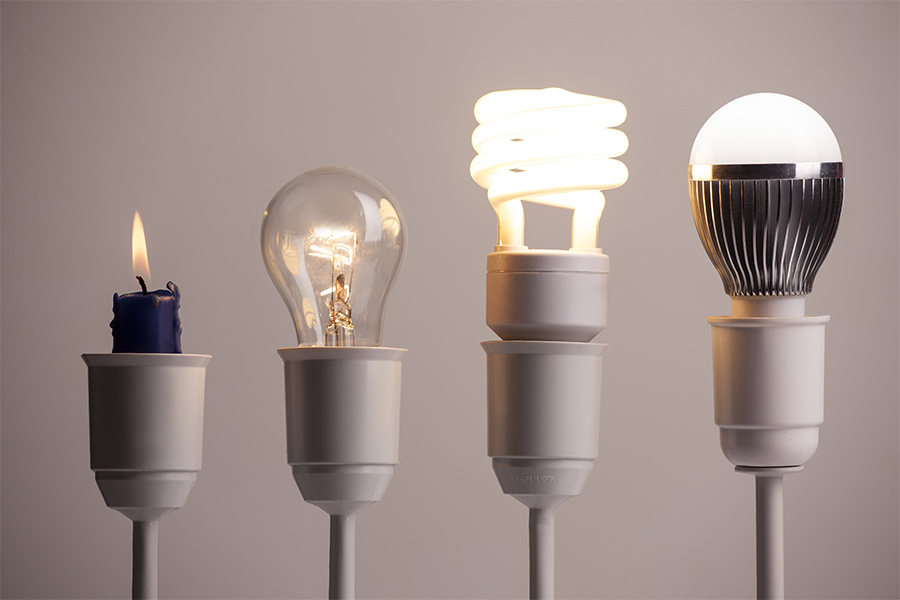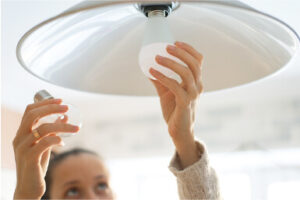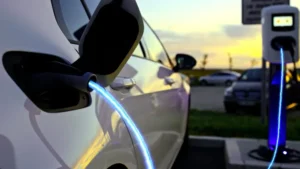Why You Should Switch to LED Lights

Are LED Light Bulbs Better?
LED lights are conquering the lighting market. Although it has grown exponentially and may seem like a passing trend, the benefits of LEDs suggest it will continue. But are LED lights better than traditional light bulbs?
This article examines this by evaluating its advantages over traditional incandescent bulbs.
What Are LEDs?
LEDs are solid-state semiconductor devices that emit light when an electrical current is passed through them. They are more efficient than incandescent bulbs, meaning they can provide more light for less electricity. LEDs also have longer lifespans and can last for decades without performance degradation, about 50 times longer than other lighting options.
And since their color temperature is adjustable over a much wider spectrum (e.g. warmer or cooler), LEDs can be used to create the perfect atmosphere for every situation: bright white in the office, warm yellow at home, cool blue for the Public holidays. .. The possibilities are endless!
What Are The Available Options For Light Bulbs?
Basically, there are three popular options for light bulbs:
- Incandescent Light Bulbs – These are the traditional “old fashioned” light bulbs that most of us grew up with. They are less energy efficient and have a shorter lifespan.
- Compact Fluorescent Lights (CFL) – These are “coil” lights that are comparatively more energy efficient than incandescent bulbs.
- LED – these lights are very energy efficient and look better as they look like incandescent bulbs.
The main difference between each type of light bulb is the different amount of energy required to operate them. But it’s the LED bulbs that you think you should really pay attention to.
And here’s why!
What Are The Benefits Of Using LEDs?
Let’s look at some of the benefits of using LEDs to answer our main question: are LED lights better?
Here are some things to consider:
More Cost Effective
In general, LEDs are more efficient than incandescent bulbs and less expensive to run. For example, an LED light bulb that costs $5 will last around 5 years and uses less than $1 of electricity, while a similar lightbulb costs less than $1 but will only last a year before running out along with the energy bill.
Long Lifespan
When it comes to the lifespan of LED bulbs, you can expect them to last much longer than traditional incandescent bulbs. While incandescent bulbs burn out after around 1,000 hours and fluorescent bulbs typically last between 15,000 and 20,000 hours (although they tend to lose efficiency before then), an LED bulb will stay bright for at least 20 years.
Energy Efficiency
LED lamps are not only durable, but also energy efficient. They also offer better color quality than other types of lighting.
While incandescent lamps produce warm white light with a temperature similar to midday sunlight on a bright summer day (2700 K), LEDs produce bright daylight tones (5000 K).
This makes them ideal for task lighting in kitchens as they do not give off heat or glare when used at night when cooking or reading recipes while preparing food.
Improved Environmental Performance does not give off heat or glare when used at night when cooking or reading recipes while preparing food.
The environmental benefits of LEDs are huge! They produce no heat, so they don’t require air cooling or fans. Because they don’t need to be cooled, LEDs also consume less power than traditional incandescent bulbs and can last for years without needing to be replaced.
This means fewer greenhouse gas emissions during production and use, less energy wasted on air conditioning/cooling systems to manage heat buildup in buildings around, and reduced demand for electricity—which would otherwise come from fossil fuels like coal or oil that emit greenhouse gases when burned as fuel sources.
Furthermore, since LEDs don’t contain any UV emissions (which can damage your eyesight), mercury (a toxic metal used in many other kinds of light bulbs), or toxic chemicals such as lead oxide (another ingredient sometimes found in older lighting systems) you won’t have any waste products left over after using them—no hazardous waste!
Operates Better In Cold Conditions
The ability to operate in cold temperatures is another important advantage of LEDs. The LEDs used in streetlights, for example, are designed to provide light even when the temperature drops well below freezing. In some cases this capability is critical; for instance, if you have lights on top of your house that have to operate 24 hours a day regardless of weather conditions.
LEDs can also run at much higher voltages than other types of bulbs and don’t require special fans or heat sinks to keep them cool when they’re running at high power levels—something that’s especially good news if you’re using them outdoors where there isn’t much space available (and therefore it would be difficult to install coolers).
No Heat Or UV Emissions
LED lights do not emit heat or ultraviolet light, so you can use them just about anywhere. No reflectors or cooling fans are required to dissipate the heat generated by traditional incandescent bulbs, and no protection from UV emissions from fluorescent lighting is required.
Design Flexibility
LED lamps are more flexible in terms of design and are therefore suitable for all applications. They can be designed to fit any size fixture, so they can easily replace incandescent or compact fluorescent bulbs. They can also be designed to match any shape of light fixture, be it a lampshade or a sconce. LEDs even come in a variety of colors and styles, so you’ll have no trouble finding an LED light bulb to match your interior design.
The best? You save money too!
Low Voltage Operation
Low-voltage LEDs differ greatly from conventional incandescent and halogen lamps. They operate at a lower voltage, which means they use less electricity to produce the same amount of light. This means you use fewer watts and still get comparable lighting. In addition to being more efficient, low voltage LED lamps can be used in many other applications where higher voltages would be unsafe or impossible.
Low-voltage LED lights are also much safer than other types of lightbulbs because they contain no open flames and their glass bulbs do not shatter into pieces if shattered (like many LED lightbulbs do). incandescent or halogen lamps). They are also much more flexible than traditional light sources as they do not contain any high voltage components – you can even put one in your bike helmet!
Durable
LEDs are also durable: they can fall out without splintering or shattering like glass bulbs do, so you don’t have to worry about cleaning up broken pieces every time your child drops their toy on the floor. This makes them ideal for children’s rooms, as you won’t have to worry about replacing them (or spending money on new ones) as often.
Should You Consider Installing LED Lights?
So are LED lights better than the other options available? Ultimately, it is up to you to decide whether or not LEDs are right for your needs. It should be noted that LED lamps are more expensive and therefore the initial investment can be significantly higher than for conventional light bulbs.
However, this should be viewed as an investment rather than a cost. Energy cost savings and positive environmental contributions can provide a long-term net benefit and therefore a positive return on investment.
They’re definitely worth considering if you want more flexibility in lighting your home without worrying about energy bills.
If you require further advice and guidance as to whether or not these are the best choice for you, contact a qualified electrician at Poss Electric. One of our team members will then get in touch with you.




